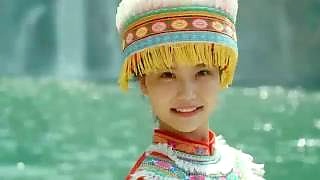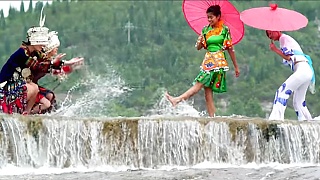With Living in China ...
[video v=2hlgWm6J-F8]Welcome to GuiYang City
Introduction
GuiYang is the capital city of GuiZhou Province, located in the southwestern part of China. Known for its lush green landscapes, vibrant ethnic culture, and pleasant climate, GuiYang offers a unique blend of natural beauty and modern city life. The city is a gateway to exploring the diverse cultural and natural attractions of GuiZhou Province.
History
GuiYang has a rich history dating back to the Yuan Dynasty (1271-1368). Originally a military outpost, the city gradually developed into a cultural and economic hub. Throughout its history, GuiYang has been influenced by various ethnic groups, which is reflected in the city’s diverse culture and traditions. Today, GuiYang is a modern city that still retains much of its historical charm.
Top Attractions
Qianling Park
Qianling Park is one of the most famous parks in GuiYang. It features lush greenery, a serene lake, and Qianling Mountain. The park is also home to Qianling Temple, an ancient Buddhist temple, and the Hongfu Temple, which is perched atop the mountain, offering stunning views of the city.
Jiaxiu Pavilion
Jiaxiu Pavilion is a historic landmark located on the Nanming River. Built during the Ming Dynasty, the pavilion is known for its elegant architecture and picturesque surroundings. It has become a symbol of GuiYang and is a popular spot for both locals and tourists.
Qingyan Ancient Town
Qingyan Ancient Town, located just outside of GuiYang, is a well-preserved ancient town that dates back to the Ming Dynasty. The town features traditional stone architecture, narrow streets, and historic sites such as temples, pavilions, and former residences of notable figures.
GuiYang Forest Park
GuiYang Forest Park is a large urban park that offers a peaceful retreat from the hustle and bustle of city life. The park is known for its dense forests, walking trails, and beautiful ponds. It’s a great place for nature lovers to relax and enjoy outdoor activities.
Hebin Park
Hebin Park is another popular park in GuiYang, located along the Nanming River. The park is beautifully landscaped and features a variety of gardens, pavilions, and water features. It’s an ideal spot for a leisurely stroll or a family picnic.
Renmin Plaza
Renmin Plaza is the central square of GuiYang and serves as a focal point for cultural and social activities in the city. The plaza is surrounded by important landmarks, government buildings, and shopping centers, making it a lively and vibrant part of the city.
Nearby Attractions
Huangguoshu Waterfall
Huangguoshu Waterfall, located about 130 kilometers from GuiYang, is one of China’s largest and most famous waterfalls. The waterfall is a spectacular sight, surrounded by lush forests and offering various viewing platforms. It’s a must-visit for nature enthusiasts.
Xijiang Qianhu Miao Village
Xijiang Qianhu Miao Village is the largest Miao ethnic village in China, located around 200 kilometers from GuiYang. The village is known for its traditional wooden houses, vibrant Miao culture, and stunning terraced fields. Visitors can experience the unique customs, dances, and festivals of the Miao people.
Dragon Palace Cave
Dragon Palace Cave, located in Anshun city about 120 kilometers from GuiYang, is a magnificent karst cave system. The cave is famous for its underground rivers, waterfalls, and stunning stalactites. Boat tours are available to explore the cave's fascinating formations.
Red Maple Lake
Red Maple Lake, located about 40 kilometers from GuiYang, is a beautiful scenic spot known for its clear waters, red maple trees, and numerous islands. It’s a perfect destination for boating, fishing, and enjoying the serene natural environment.
Local Cuisine
GuiYang is famous for its spicy and flavorful cuisine, which is influenced by the region's diverse ethnic groups. A must-try dish is Sour Fish Soup, a local specialty made with fresh fish, chili peppers, and pickled vegetables. Another popular dish is LaZi Ji, a spicy chicken dish. Street food is also abundant in GuiYang, with vendors offering snacks like rice tofu, sticky rice, and barbecued meats.
Visitor Tips
- Best Time to Visit: GuiYang has a mild climate, making it a great destination year-round. However, the best time to visit is during spring and autumn when the weather is pleasant and the natural scenery is at its best.
- Getting There: GuiYang is well-connected by air, with GuiYang Longdongbao International Airport serving the city. The city is also accessible by high-speed train from major cities like ChengDu and KunMing.
- Language: Mandarin is the primary language spoken in GuiYang. While English is not widely spoken, you can find some English signs in tourist areas. It’s helpful to learn a few basic Mandarin phrases.
- Etiquette: When visiting cultural or religious sites, dress modestly and be respectful of local customs and practices.







